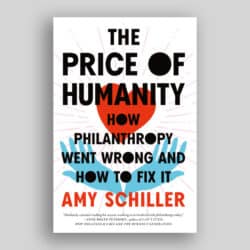The Public-Private Nature of Charity Law, by Kathryn Chan, Oxford and Portland, Oregon, Hart Publishing, 2016, ISBN 978-1-78225-848-3
The 19th century social reformer Lord Brougham, commenting on opposition to the establishment of a regulatory apparatus for charities, said:
Th[e] law [of England] regards the inheritance of the poor as a matter of public, not of private jurisdiction, and deals with it as it does with the rights of the Crown and the Church . . . I therefore again assert, that a more gross abuse of language never was committed by ignorant or by willful perversion, than the statement that charitable funds are of a private nature.
How the law concerning charities reflects the tension expressed in this historic debate – between a view of charities as a vehicle for assisting benevolent citizens to dispose of their property in a way that will benefit others, and one which sees charitable property as a collective asset to be used in the public interest – is at the heart of the dense and nuanced analysis in this book.
Kathryn Chan’s thesis is that charity law is a legal hybrid in the true sense. Charity law is in part a form of private law, concerned with safeguarding the autonomy of holders of property to make their own choices about how they wish to benefit others, and with monitoring the ability of charitable organizations to carry out their donors’ intentions. Charity law also has roots in concepts of public benefit or public interest, based on the sense of courts and legislators that the assets and the activities of charities are part of the social fabric in a way that calls for scrutiny on behalf of the “public.” As Chan points out, questions about who constitutes the public in this context, and what kinds of interests may be asserted in their name, continue to cloud and complicate the evolution of legal principle in this area. However, charity law has steadily held to the idea that the role of charities is more expansive than merely to provide an outlet to the desires of individuals, no matter how altruistic. Indeed, one of the author’s basic premises is that charity law has become more oriented over time towards the public side of its character.
Much of the book examines the evolution in the common law of England and Wales with respect to charities, and the regulatory arrangements that were put in place, beginning in the nineteenth century, now embodied in the Charity Commission. The Charity Commission is a non-ministerial government body whose mandate permits it, not only to determine whether an organization meets the definition of a charity and whether it is acting within parameters established by statute, but also to formulate policies and guidelines for charities. Due to recent statutory amendments and consolidations, the tone of these guidelines has changed somewhat – for example, by the removal of references to the scale of fees that a charitable organization may charge. Yet it is clear that the Commission has the capacity to think carefully and systematically about the balance of public and private interest in charity law in making its regulatory decisions.
For Canadian readers, the most interesting aspect of the book is likely to be the comparison between the regulatory regime in place in the UK and that which Canada has adopted. In the UK, the Charity Commission has been operating under its current statutory mandate since 2011, but the character of the regulatory system for charities has roots that go back much further. The Statute of Charitable Uses of 1601 was the genesis of the current model, focusing on defining appropriate charitable objectives and ensuring that the goals and activities of charities are such as to confer legitimate public benefits. Though present day charities may spend little time thinking about the “marriage of poor maids,” other charitable purposes listed in the 1601 statute have stood the test of time – the relief of the poor, education, and support of public infrastructure, for example. As a separate government agency, the Charity Commission is able to provide a range of regulatory direction and support, concentrating on the public benefit provided by charitable activity.
In Canada, on the other hand, the regulation of charitable organizations is carried out as a facet of the tax system, and is largely focused on ensuring that activity not falling within the statutory definition of a charitable purpose is not exempted from the tax base. The Charities Directorate of the Canada Revenue Agency (CRA) administers the small handful of provisions of the Income Tax Act setting out the requirements for attaining status as a charity. It does not have regulatory authority of its own – though it does from time to time formulate advice and guidelines – but is a bureaucratic unit of the CRA. Though the scant attention to charities in tax or other Canadian legislation may seem to create a light regulatory weight, the weight of tax-exempt status in this system in fact provides the Charities Directorate with a fairly potent tool.
The final three chapters of the book use the conceptual lens of public-private hybridity to look at three specific issues: the question of standing; the vulnerability of charities to co-optation for particular government purposes; and the emergence of social enterprise as an additional means of carrying out benevolent objectives.
Though all of these are fascinating issues, those in the non-profit sector will possibly see their own situation most clearly in the chapter on co-optation. In the past, governments were more interested in seeing that charities acted within a long-established range of accepted purposes. In keeping with the private aspect of the character of charities, governments were not inclined to provide extensive direction on how charities should conduct their affairs in pursuit of these purposes, even when the public invested money in these organizations. More recently, however, for charities reliant on public funding, governments have found ways of pressuring charities to align their work more closely with particular government goals or policies. This can happen because of funding agreements specifying performance targets or reporting requirements, of the transfer of what used to be government services to non-profit organizations, or of the shift from open-ended funding arrangements to grants tied to specific programs favoured by a government. In all of these scenarios, the freedom of charities to deviate from the objectives of governments is constrained, with implications for charities’ decisions about service priorities, as well as for the ability of charities to maintain a critical stance on government action or inaction.
Chan’s arguments require close attention. She writes elegantly and forcefully, but her chosen subject is a complicated one, and pursuing her claims to a conclusion necessitates sustained effort. The effort is well repaid, however, as the book provides a provocative analysis of a number of issues lying at the centre of current debates about the status and future prospects of the charitable sector.


